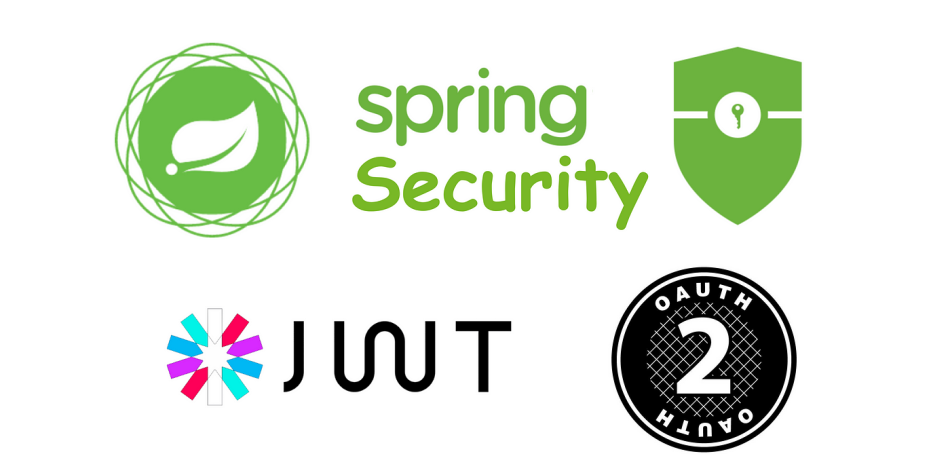Reasons You’re Not Receiving JWT Tokens and How to Fix It in Spring Security
 Tuanhdotnet
Tuanhdotnet4 min read

1. Understanding Why JWT Tokens Are Not Received
JWT issues can arise at several stages of the token lifecycle: generation, delivery, or validation. Let’s break these down.
1.1 Misconfigured Security Filters
Spring Security relies heavily on filters to handle authentication. If your custom JWT filter isn’t properly registered or configured, Spring Security might bypass it entirely, preventing token generation or validation.
Example: Missing OncePerRequestFilter in your Spring Security configuration.
public class JwtAuthenticationFilter extends OncePerRequestFilter {
@Override
protected void doFilterInternal(HttpServletRequest request,
HttpServletResponse response,
FilterChain filterChain) throws ServletException, IOException {
String token = request.getHeader("Authorization");
if (token == null || !token.startsWith("Bearer ")) {
filterChain.doFilter(request, response);
return;
}
// Proceed to validate and authenticate the token
// Token validation logic here
}
}
If you forget to add this filter in your security configuration, the token will never be processed:
@EnableWebSecurity
public class SecurityConfig extends WebSecurityConfigurerAdapter {
@Override
protected void configure(HttpSecurity http) throws Exception {
http.addFilterBefore(new JwtAuthenticationFilter(), UsernamePasswordAuthenticationFilter.class);
}
}
1.2 Missing or Incorrect Authorization Header
The Authorization header in HTTP requests carries the JWT. If the client forgets to include this header or formats it incorrectly, the server will not receive the token.
Common Mistake: Sending a raw token without the Bearer prefix.
Authorization: Bearer <your-jwt-token>
If the header is sent as Authorization:
(without Bearer), the filter will fail to parse it. Modify the filter to include validation for the prefix:
if (!token.startsWith("Bearer ")) {
response.sendError(HttpServletResponse.SC_UNAUTHORIZED, "Invalid Authorization header");
return;
}
1.3 Expired or Invalid Token
Tokens have a limited lifespan defined during their generation. An expired token will fail validation, resulting in 401 Unauthorized responses.
Code Example: Token Generation with Expiration
public String generateToken(String username) {
return Jwts.builder()
.setSubject(username)
.setIssuedAt(new Date())
.setExpiration(new Date(System.currentTimeMillis() + 3600000)) // Token valid for 1 hour
.signWith(SignatureAlgorithm.HS512, SECRET_KEY)
.compact();
}
Solution: Ensure the token hasn’t expired before making requests. Additionally, verify the client’s system clock if you’re facing unexpected expiration issues.
1.4 Incorrect Secret Key or Algorithm Mismatch
The JWT is signed with a secret key using a specific algorithm. Any mismatch between the server’s and client’s key or algorithm can lead to validation failures.
Example of Algorithm Mismatch:
// Signing the token with HS256
.signWith(SignatureAlgorithm.HS256, SECRET_KEY)
If the client attempts to validate with a different algorithm (e.g., HS512), the server will reject the token.
2. Fixing JWT Issues in Spring Security
Once the root cause is identified, you can implement solutions to resolve the issues effectively.
2.1 Registering Custom Filters Correctly
Make sure your JWT authentication filter is added in the correct order in the Spring Security filter chain.
@Override
protected void configure(HttpSecurity http) throws Exception {
http.csrf().disable()
.authorizeRequests()
.antMatchers("/api/auth/**").permitAll()
.anyRequest().authenticated()
.and()
.addFilterBefore(new JwtAuthenticationFilter(), UsernamePasswordAuthenticationFilter.class);
}
2.2 Validating Tokens Properly
Use utility methods to validate the token’s structure, expiration, and signature.
Code Example: Token Validation
public boolean validateToken(String token) {
try {
Jwts.parser().setSigningKey(SECRET_KEY).parseClaimsJws(token);
return true;
} catch (ExpiredJwtException e) {
System.out.println("Token has expired: " + e.getMessage());
} catch (UnsupportedJwtException | MalformedJwtException | IllegalArgumentException e) {
System.out.println("Invalid token: " + e.getMessage());
}
return false;
}
Ensure the filter uses this method:
String jwt = token.substring(7); // Remove "Bearer " prefix
if (!validateToken(jwt)) {
response.sendError(HttpServletResponse.SC_UNAUTHORIZED, "Invalid or expired token");
return;
}
2.3 Adding CORS Support
Cross-Origin Resource Sharing (CORS) can block tokens sent via browser-based requests if the CORS configuration is missing.
Code Example: Global CORS Configuration
@Bean
public WebMvcConfigurer corsConfigurer() {
return new WebMvcConfigurer() {
@Override
public void addCorsMappings(CorsRegistry registry) {
registry.addMapping("/**")
.allowedOrigins("http://localhost:3000")
.allowedMethods("GET", "POST", "PUT", "DELETE")
.allowCredentials(true);
}
};
}
2.4 Debugging Tips for Missing Tokens
Enable Logs: Use Spring Security debugging to trace request and filter execution.
logging.level.org.springframework.security=DEBUG
Check Request Headers: Use tools like Postman or curl to ensure headers are being sent correctly.
Validate Secret Keys: Confirm the secret key is consistent across environments.
3. Conclusion
JWT integration with Spring Security is straightforward when properly configured. However, minor missteps in filters, headers, or token validation can lead to frustrating issues. By following the steps outlined above—such as registering filters, handling headers correctly, and configuring token validation—you can ensure a robust JWT authentication system.
Do you have any lingering questions or challenges related to JWT implementation in Spring Security? Let’s discuss them in the comments below!
Read more at : Reasons You’re Not Receiving JWT Tokens and How to Fix It in Spring Security
0
Subscribe to my newsletter
Read articles from Tuanhdotnet directly inside your inbox. Subscribe to the newsletter, and don't miss out.
Written by

Tuanhdotnet
Tuanhdotnet
I am Tuanh.net. As of 2024, I have accumulated 8 years of experience in backend programming. I am delighted to connect and share my knowledge with everyone.